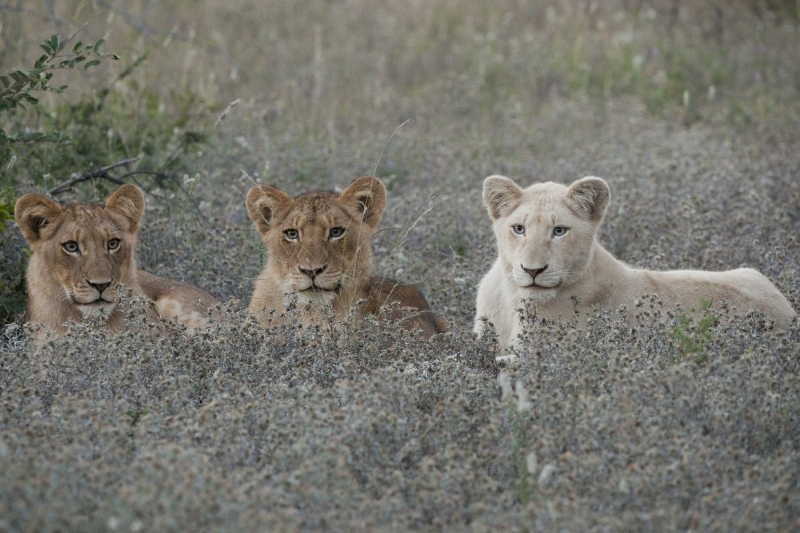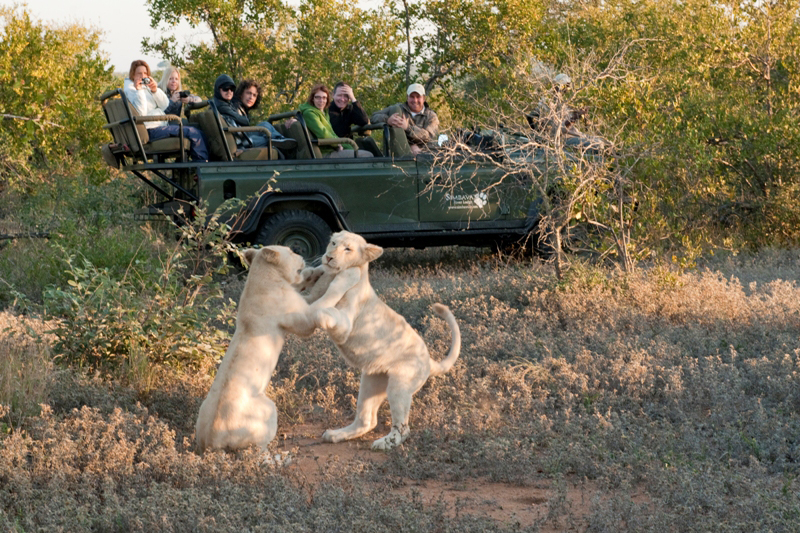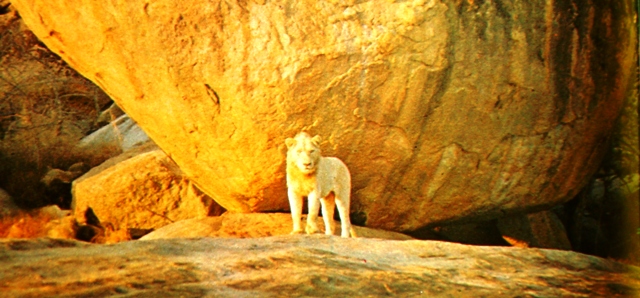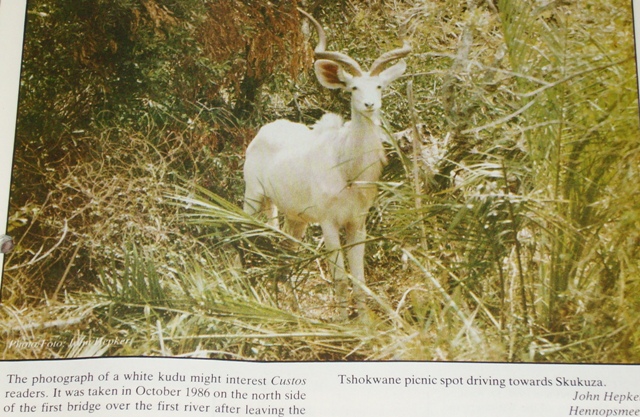MBOMBELA – A large part of the white-lion population resides in zoos and lion parks these days, and that is exactly why visitors to the Kruger National Park (KNP) were recently astonished to see a white-lion cub emerge from the dense vegetation.
SANParks media specialist Mr Isaac Phaahla said they had not received any reports of such sightings in the last 25 years. On February 6 this year, however, a cub was photographed by Alberto Scattolin next to Satara on the S100.
This was in fact the second one noticed in the Satara area especially around the Singita Lebombo Concession.
The pride had been identified as the Shishangana Pride and at the latest sighting they numbered 30. They consisted of four males, eight lionesses and 18 cubs, two of which were white. These two cubs were estimated to be about nine months and a few weeks respectively.
This was a very rare sighting, said Dr Markus Hofmeyr, head of veterinary wildlife services at SANParks. “Visitors to the KNP should enjoy this phenomenon, as I am only aware of two of its kind in the KNP,” he said. “Their white colour is caused by a less-severe mutation in the same gene that causes albinism. However, it’s not exactly the same, but rather classified as leucistic.
Leucism is a condition in which partial loss of pigmentation in an animal results in white, pale, or patchy colouration of the skin or hair, but not the eyes, paw pads, nose and lips as seen in the picture,” said Hofmeyr. Unlike albinism, it is caused by a reduction in multiple types of pigments, not just melanin.
He added that this colouration which ranged from blonde to near-white did not appear to disadvantage their survival, but didn’t have much advantages either. It also didn’t change their behaviour and didn’t affect their acceptance in the pride. There were, however, a few dangers that might be life threatening to these beauties, but luckily their pelt darkened as they got older. “These risks include hunters, but not to such a big extent. The bigger danger is their camouflage while they are still young. This will affect their hunting skills and also make them vulnerable to other animals, which is the only real probable disadvantage.
“The gene is recessive and will emerge now and again in the species. At this stage, it is unclear how many are currently in the KNP,” Phaahla concluded. Over the festive season of 2014, another rare sighting caused a stir when nature lover Mr Dave Johnson photographed a little albino elephant.
http://lowvelder.co.za/257333/rare-sigh ... es-kruger/Please check Needs Attention pre-booking: https://africawild-forum.com/viewtopic.php?f=322&t=596






